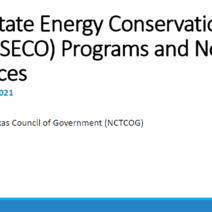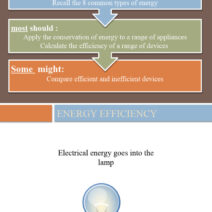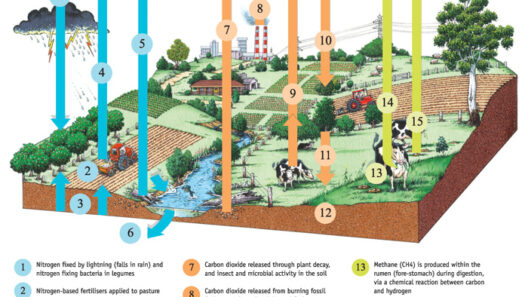Climate change is a phenomenon that transcends geographical boundaries, affecting ecosystems, economies, and human health. The ubiquitous discourse surrounding climate change often elicits strong emotional responses. Yet, within these conversations, a fascinating observation emerges: while the climate crisis appears insurmountable, the potential for innovative solutions continues to burgeon. This raises an intriguing question: can we navigate the labyrinth of climate change to cultivate a sustainable, equitable future? The answer may reside in the convergence of science, technology, and community engagement.
Historically, humanity has exhibited an extraordinary capacity for ingenuity, particularly in times of adversity. The current climate crisis serves as a potent catalyst for action, spurring novel developments in renewable energy, sustainable agriculture, and waste reduction techniques. The recognition that we possess the tools necessary to mitigate climate change can engender hope. However, hope must be underpinned by actionable, systematic strategies that prioritize both environmental integrity and socioeconomic equity.
At the heart of effective climate action lies the principle of sustainability. This concept entails not merely the reduction of carbon emissions but also the promotion of practices that allow natural systems to flourish. For instance, the shift towards renewable energy sources, such as solar, wind, and hydroelectric power, is pivotal. These alternatives not only mitigate the release of greenhouse gases but also create local employment opportunities, fostering economic resilience. Transitioning away from fossil fuels necessitates massive investments, yet the long-term benefits, both environmental and economic, justify the expenditure.
Environmental degradation often correlates with poverty. Thus, strategies that focus on sustainable development must incorporate social dimensions. The intersectionality of climate change with human rights and equity underscores the need for inclusive policies that empower marginalized communities. Community-led initiatives in regions vulnerable to climate impacts illustrate this point vividly. Such frameworks allow locals to tailor solutions to their unique circumstances, fostering resilience through adaptive practices in agriculture, water management, and urban planning.
Pursuing climate literacy is equally vital. Public understanding of climate science should be a priority to galvanize widespread action. Education can dismantle misconceptions about climate change while fostering a culture of environmental stewardship. Integrating climate education into school curriculums ensures that future generations are not only informed but also equipped to innovate and advocate for sustainable practices. From elementary art projects to high school research, youth engagement is a powerful mechanism for change.
Urban environments play a critical role in climate mitigation. Cities, where over half of the global population resides, contribute significantly to greenhouse gas emissions. However, they also present unique opportunities for innovative solutions. Urban green spaces, such as parks and green roofs, can reduce the heat island effect, enhance air quality, and improve the overall well-being of residents. These areas serve as both carbon sinks and recreational spaces, illustrating that urban planning can harmonize ecological functions with human needs.
Moreover, sustainable practices must extend to agriculture, where innovative techniques like agroecology and permaculture are gaining traction. These methods prioritize biodiversity, enhance soil health, and reduce dependency on chemical fertilizers while increasing food security. Integration of traditional ecological knowledge with scientific research can revolutionize our approach to food systems, fostering resilience against climate extremes. The symbiotic relationship between agriculture and climate adaptation underscores the potential for mutually beneficial practices.
Transportation, too, is an area ripe for transformation. The transition to electric and hybrid vehicles, coupled with investments in public transport, can substantially reduce emissions associated with commuting. The promotion of cycling and walking as viable, sustainable modes of transport can alleviate urban congestion while enhancing public health outcomes. Policies that encourage car-free zones or support the development of infrastructure for pedestrians and cyclists can foster a culture of sustainability in urban areas.
Nevertheless, achieving a sustainable future necessitates policy frameworks that incentivize green practices. Governments must take the lead by implementing regulations, subsidies, and tax incentives that favor renewable energy and sustainable practices while penalizing environmentally detrimental activities. By aligning economic incentives with ecological imperatives, policymakers can drive systemic change across various sectors.
Corporate responsibility is another cornerstone of climate action. Businesses, particularly those in carbon-intensive industries, must acknowledge their role in the climate crisis. Implementing sustainable practices in manufacturing, supply chains, and product design can dramatically reduce environmental footprints. The rise of corporate sustainability reporting illustrates a shift toward transparency and accountability, emphasizing that profitability and ecological responsibility can coexist.
Engagement at local, national, and international levels is crucial for effective climate governance. Citizens have a pivotal role in advocating for climate action, through participation in policy discussions and holding leaders accountable. Grassroots movements have historically galvanized public attention and spurred substantive change. Consequently, fostering a collective consciousness about climate change can leverage democratic processes towards more robust environmental policies.
In conclusion, the question “Can we make climate change manageable?” opens a dialogue about agency and responsibility. The evidence suggests that with commitment, innovation, and collaboration, addressing climate change is not only feasible but imperative. By marrying technological advancements with sustainable practices and fostering inclusive community engagement, it is possible to navigate the challenges of climate change towards a greener, more just future. The path ahead may be laden with obstacles, but through collective action, humanity can steer toward a more sustainable equilibrium between human needs and environmental stewardship.





